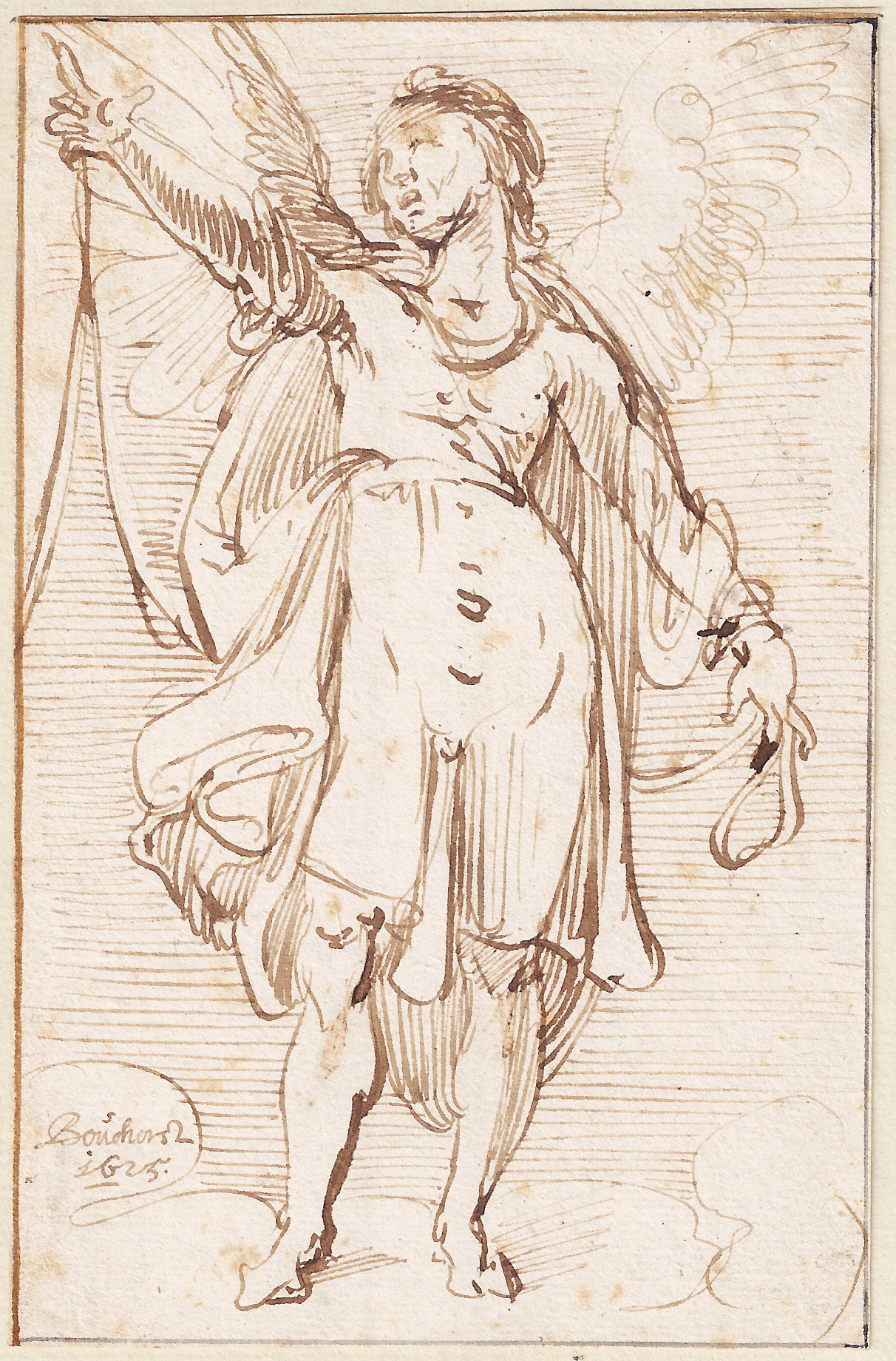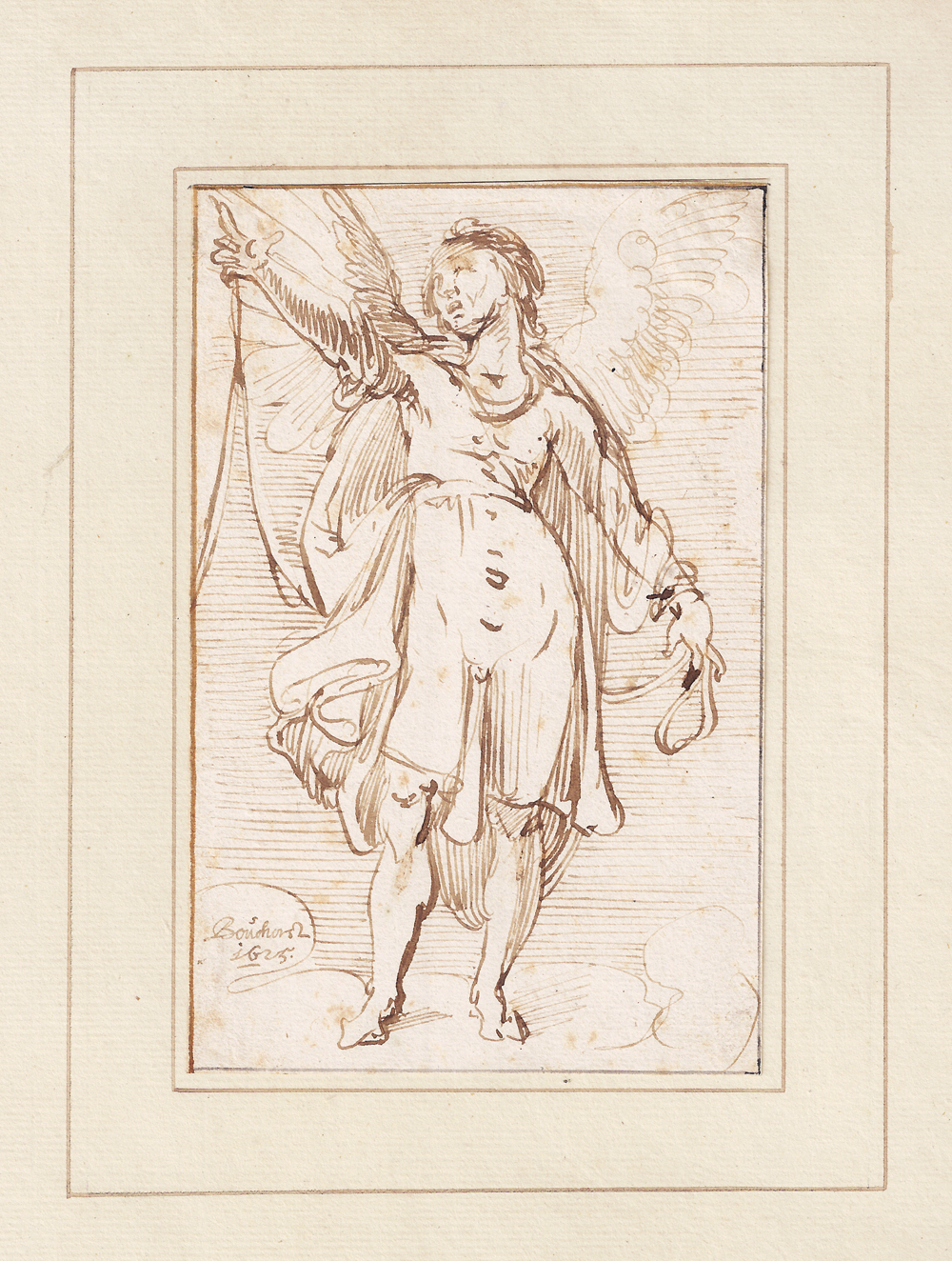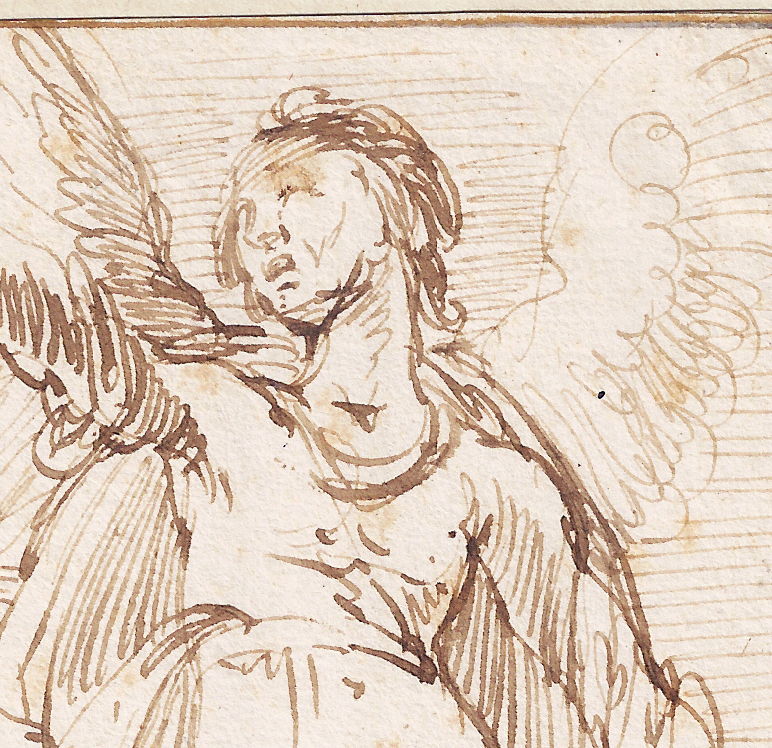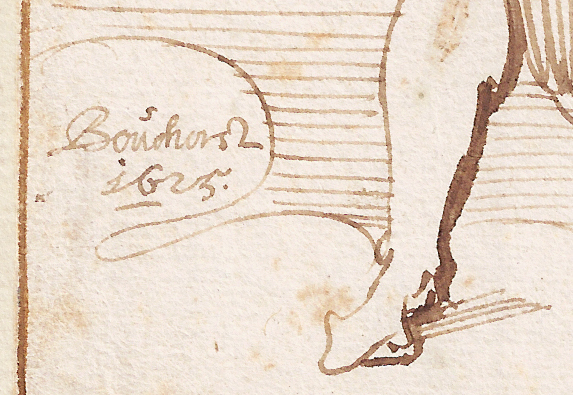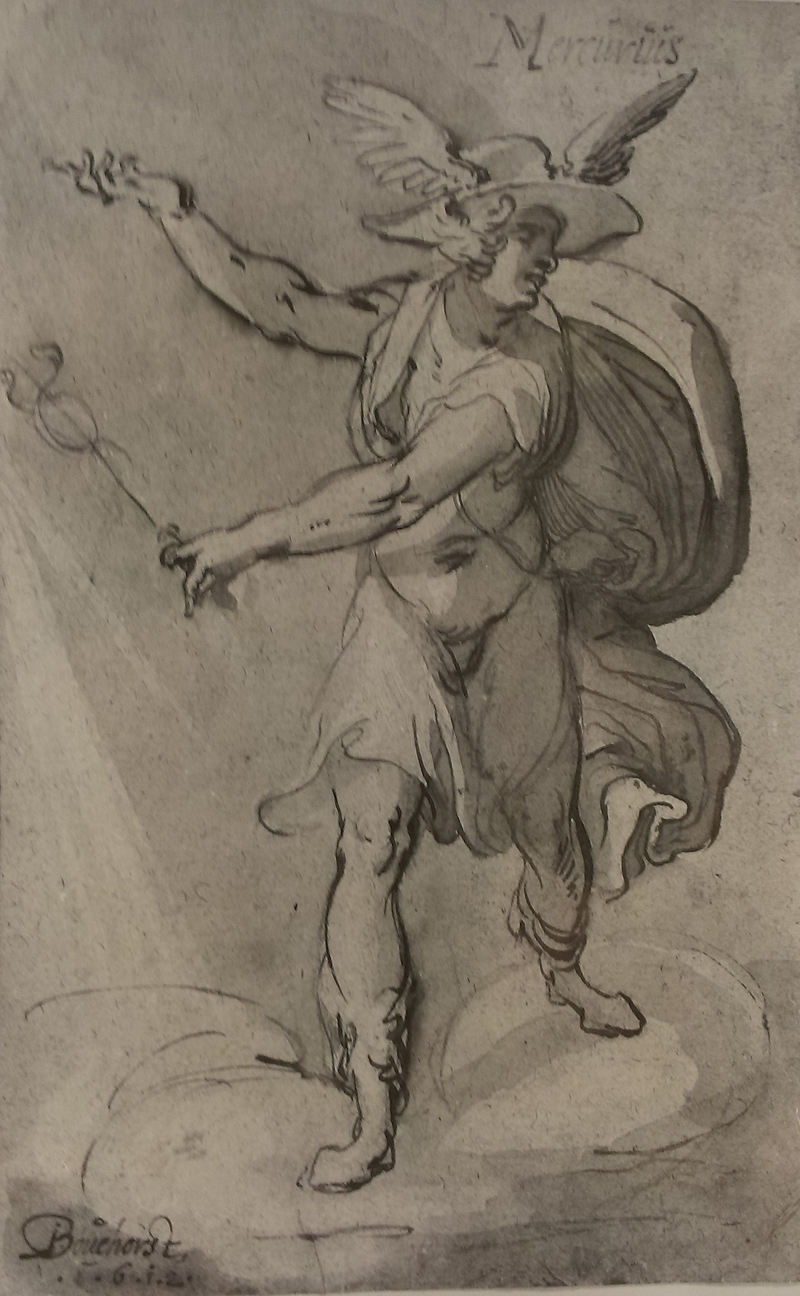JAN PHILIPSZ VAN BOUCKHORST (Haarlem c.1588 – 1631 Haarlem)
Jan Philipsz van Bouckhorst (Haarlem c.1588 – 1631 Haarlem)
An Angel with Outstretched Arm
Pen and brown ink, partial brown and black ink framing lines, 150 x 99 mm (5.9 x 3.9 inch); hinged onto a mount with framing lines in brown ink and watermark ‘VRYHEID’
Signed and dated ‘Bouchorst / 1625’ (pen and brown ink, lower left)
Provenance
Professor Johan Quirijn van Regteren Altena, Amsterdam (1899–1980), until sold by his descendants in 2014 (his collector’s mark applied on the verso)
***
Relatively little is known about the life of Van Bouckhorst.1 Recorded as a glass painter from 1617, he was mentioned as a ‘vinder’ of the guild of St Luke in 1628, and as dean in 1630 and 1631. Van Bouckhorst is known to have made a stained-glass window for the town hall of Haarlem, representing the Battle of Dalmatia, a popular theme in stained-glass art; the window itself is only known through an etching by Willem Outgersz. Akersloot. The accounts of the treasurer of the city of Haarlem indicate that Van Bouckhorst was responsible for several other windows in the city, none of which has survived. Bouckhorst lived in the Korte Bagijnensteeg in Haarlem; among his pupils was Pieter Jansz. (1612–1672).
Most of Van Bouckhorst’s drawings are signed and frequently dated, as also is our attractive sheet. It is however difficult to establish a chronology based on stylistic analysis, as the artist used different styles at any given time. The artist was one of the last representatives of late Mannerism in The Netherlands, and the influence of Bartholomeus Spranger, Hendrick Goltzius and Jacques de Gheyn II can be detected in his work, as well as that of Italian Mannerists. Van Bouckhorst would have known Goltzius and De Gheyn well from the close-knit artistic circles in Haarlem in which he operated. Occasionally Bouckhorst copied works by other artists, such as Pieter Lastman.
Bouckhorst has been rightly described as ‘one of the most delightful minor masters in the history of seventeenth-century Dutch drawing’ by Marijn Schapelhouman.2 The sinuous lines and reinforced contours, which are somewhat reminiscent of glass painting, are typical of his style. Schapelhouman characterized his style as ‘nonchalance bordering on carelessness, but not without a certain bravura’.3
Although the present sheet was executed some thirteen years later, it can for instance be compared to Bouckhorst’s drawing of Mercurius in the Statens Museum for Kunst, Copenhagen, which is dated 1612 (fig.).4
1. For the artist, see: M. Bisanz-Prakken, 'Bemerkungen zum Bildnis des "Pfarrers zon Steenwijkerwold" von Jan van Bouckhorst', Bulletin du Musée Hongrois des Beaux-Arts 106-107 (2007), pp. 107-14. A good discussion of his drawings is also given by Marijn Schapelhouman, Oude tekeningen in het bezit van de Gemeentemusea van Amsterdam waaronder de collectie Fodor. Tekeningen van Noord- en Zuidnederlandse kunstenaars geboren voor 1600, Amsterdam 1979, pp. 20-21.
2. Marijn Schapelhouman and Peter Schatborn, Dutch Drawings of the Seventeenth Century in the Rijksmuseum, Amsterdam. Artists born between 1580 and 1600, Amsterdam/London 1998, vol. I, p. 19.
3. Schapelhouman and Schatborn, loc. cit.
4. Pen and ink and grey wash, over black chalk, 216 x 137 mm; signed and dated ‘JBouckhorst 1.6.1.2.’ Statens Museum for Kunst, Copenhagen, inv. no. Tu 42/7. Photograph Gernsheim Corpus, no. 72141 (documentation RKD, The Hague).
